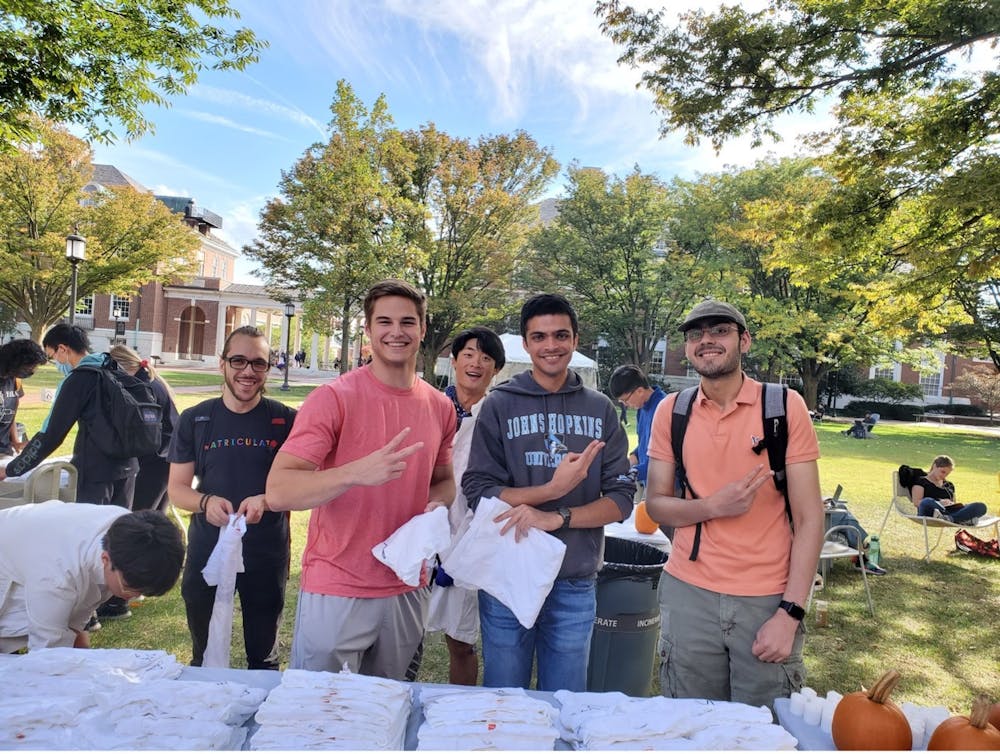
Studying biomolecular processes at the nanometer scale is not an opportunity every major or even every university offers. With the oldest undergraduate program in the nation, the Thomas C. Jenkins Department of Biophysics at Hopkins has curated a closely knit major that allows students to study life’s processes while incorporating perspectives from biology, chemistry, physics, mathematics and computer science. An innately collaborative major, Biophysics offers a rigorous training for those hoping to study the intersection of these fields.
In an interview with The News-Letter, Associate Professor Sua Myong, the director of undergraduate studies for Biophysics, discussed the field.
“I was a Molecular and Cell Biology major at the University of California, Berkeley, but I wanted something with more math and physics,” she said. “The Biophysics major here would have been a dream come true.”
Myong elaborated on the interdisciplinary nature of the major.
“Students say they are reluctant to major in Biophysics because physics is not their strength, but you do not need to excel in physics,” she said. “Lots of students are comfortable with physics and math up to differential equations and linear algebra, but extensive coursework specifically in only physics and math is not part of the core of the major now. However, students can often take more physics-based courses in the department if they are interested as well.”
Myong outlined the requirements for the major.
“There are only five core courses in the major, two semesters of research and an advanced seminar,” she said. “This is to allow students to specialize in different areas, as many students can then also double major or minor in a specific area like Applied Mathematics and Statistics, for example.”
According to Bruno Lança, a ’21 alum of the major, two of the best aspects of the major are the small class sizes and welcoming feeling of the overall department.
“With this major, you are going to find a home at Hopkins... You are going to find this group of people that even if they are not your friends initially, they will be in an academic capacity, and some will be in a social capacity as well,” he said. “You will find really great mentors in the professors as well. Throughout my time at Hopkins and my medical school application cycle, I felt really carried and supported by multiple professors in the department.”
Lança himself was drawn to the major after talking to older students and realizing he wanted to pursue biochemistry in depth. In fact, he spoke with Myong in his freshman year.
“It felt like the whole meeting was a hug; she pitched me all these courses like Biochemistry I and II and Modeling the Living Cell that fit what I wanted to do, which was to integrate biochemistry into learning about the body,” he said. “In the end, the classes were perfect for me, and I gained skills in computational biology and protein engineering which I use in my work now. Even with the classes that were quite hard conceptually... I always felt like the professors were invested in us learning and were always super willing to chat.”
The Biophysics department at Hopkins is unique compared to other departments across the nation, mainly due to its biomedical focus that is especially prominent at the School of Medicine. Additionally, there is an increased focus on molecular biophysics at Hopkins, with significant research effort focused on single molecules such as nucleic acids and proteins.
Lança noted that students should choose this major only if they truly are interested in the content covered.
“The major is best for those that really like the concepts, because if you don’t, it is hard to keep moving through some of the more conceptually rigorous and difficult classes,” he said.
Outside of classes, the department on Homewood Campus and at the School of Medicine have plenty of research opportunities. Lança said the department is very willing to help students find research and Myong recommended that students look at the publications page of lab websites to gain a better understanding about the research work when reaching out to potential mentors and labs.
There are also several departmentwide events for undergraduates, such as career nights with alum at graduate schools and other department bonding events. According to Myong, about 70% of the students in major are on the premedical track with the intent to apply to MD programs, with increasing percentages of students aiming to pursue PhD degrees or combined MD/PhD programs.
These class profiles show that the Biophysics major provides students with an opportunity to learn how to approach problems of biological relevance through an interdisciplinary background with the aim to gain a mechanistic understanding of life’s processes at the most elemental levels.
Lança offered his thoughts on how the major teaches students to develop as scientists.
“In Biophysics, more than learning content, you learn a way about how to think about questions... I think the critical thinkings skills are developed greatly in Biophysics about science as a whole,” he said.





